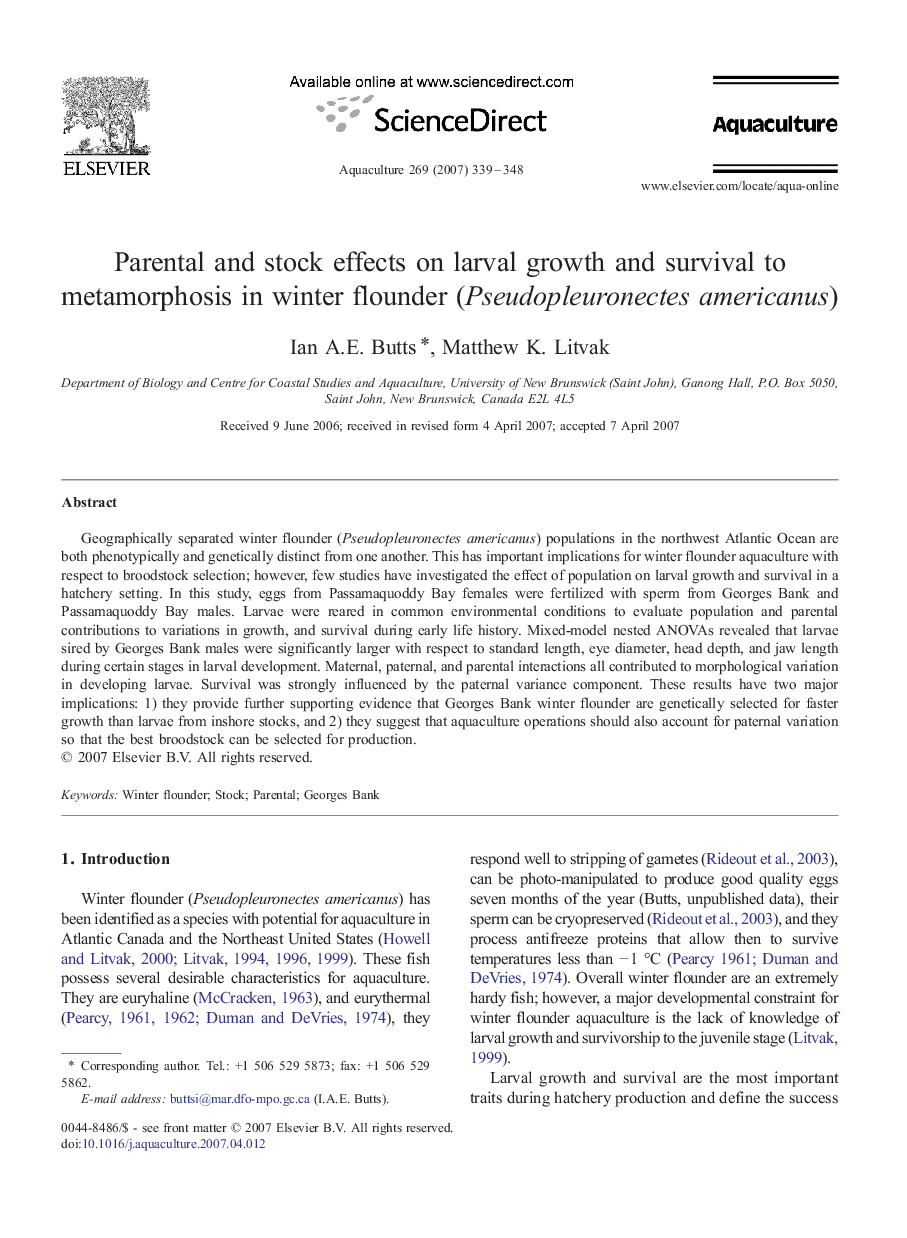| Article ID | Journal | Published Year | Pages | File Type |
|---|---|---|---|---|
| 2425289 | Aquaculture | 2007 | 10 Pages |
Geographically separated winter flounder (Pseudopleuronectes americanus) populations in the northwest Atlantic Ocean are both phenotypically and genetically distinct from one another. This has important implications for winter flounder aquaculture with respect to broodstock selection; however, few studies have investigated the effect of population on larval growth and survival in a hatchery setting. In this study, eggs from Passamaquoddy Bay females were fertilized with sperm from Georges Bank and Passamaquoddy Bay males. Larvae were reared in common environmental conditions to evaluate population and parental contributions to variations in growth, and survival during early life history. Mixed-model nested ANOVAs revealed that larvae sired by Georges Bank males were significantly larger with respect to standard length, eye diameter, head depth, and jaw length during certain stages in larval development. Maternal, paternal, and parental interactions all contributed to morphological variation in developing larvae. Survival was strongly influenced by the paternal variance component. These results have two major implications: 1) they provide further supporting evidence that Georges Bank winter flounder are genetically selected for faster growth than larvae from inshore stocks, and 2) they suggest that aquaculture operations should also account for paternal variation so that the best broodstock can be selected for production.
